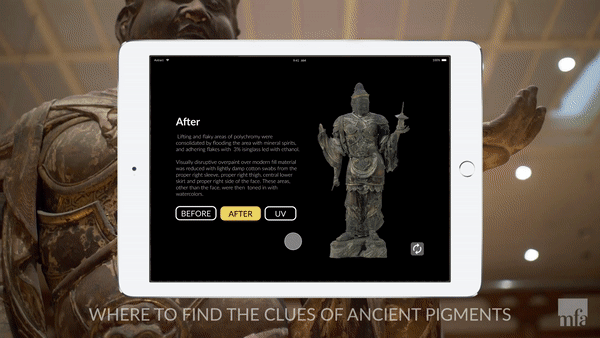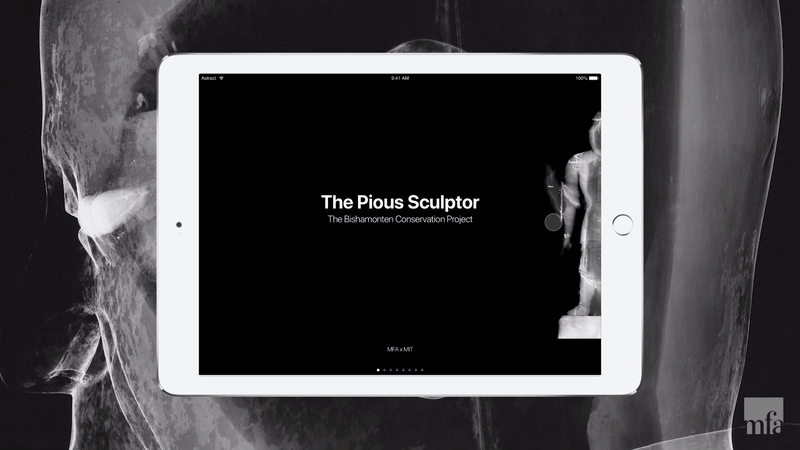How to provide smart and convenient search features for users to find assets tailored to specific design intentions ?
01 Intelligence
02 Customize
How to meet different creative needs while providing a smooth and easy-to-use user experience?
03 Inspire
How to inspire users and help them uncover their creative potentials?
01 Intelligence
How to provide smart and convenient search features for users to find assets tailored to specific design intentions ?
02 Customize
How to meet different creative needs while providing a smooth and easy-to-use user experience?
03 Inspire
How to inspire users and help them uncover their creative potentials?
01 Intelligence
How to provide smart and convenient search features for users to find assets tailored to specific design intentions ?
02 Customize
How to meet different creative needs while providing a smooth and easy-to-use user experience?
03 Inspire
How to inspire users and help them uncover their creative potentials?

Conservation
AR App.
An iOS app introducing conservation work of a Japanese statue
Sponsored by the conservation lab at the Museum of Fine Arts, Boston, this project was designed to create a virtual conservation experience for visitors to learn about Japanese Arts with fresh angles, as well as to articulate the decision-making process behind conservation treatments on public view.
It was developed for the ongoing project Conservation in Action: Japanese Buddhist Sculpture in a New Light at the MFA, Boston.
Role | user research, UX, product design, prototyping
collaborated with Minzi Long
Year | 2020
Background.
The Art of Japanese gallery in the Museum of Fine Arts, Boston, designed to evoke the dignified simplicity of Japanese temples, encourages contemplative viewing of the seven Japanese statues housed there.
The Walter Ames Compton, MD Gallery (Gallery 280) has transformed into a public conservation studio since 2018 to allow treatment of the Japanese Buddhist sculptures from the adjacent Temple Room (Gallery 279). The public studio is enclosed by glass walls featuring a Dutch door, through which visitors can engage with conservators as they work.
source: MFA Boston website
Challenge.
Using specific examples(i.e. Classical sculptures) from conservation projects on public view at the Museum of Fine Arts, Boston, the challenge is to create an engaging virtual conservation experience for visitors.
Solution.
Design Process.
Observe
Identify Problem
Ideate
Design
Reflect
What're the current visiting experiences?
What're the pain points for the visitors?
How can we provide a more engaging museum experience?
Envision the future of Museum 4.0
What's the next step?
Research.
Naturalistic Observation
The field study was conducted at Arts of Japan, MFA:
-
Review some of the ethnological research
-
Observed 35 groups of people
-
Talked to 7 of them to get some deeper insights

Field study at the Arts of Japan gallery

Typical flow of visiting

Popular spots for visiting
Summary
Avg Time Spent
3 min
Activities
Read text, Observe statues, Take pictures, Chat, Sit
With Whom
Partner > Families > Alone > Friends
Purpose of Visit
Casual visit, Come for the exhibition(rarely)
Frequency of Visiting MFA
1~3 times per year
Findings
By introducing conservation room and treatment, MFA provides visitors with fresh angles to learn Japanese arts
The Japanese-style interior creates an immersive environments to experience Japanese arts
Visitors are excited about Conservation In Action because it allows them to see different angles of Buddhist sculptures (especially from back, inside…)
Observed Problems
01 Undesigned Corners
Visitors tend to ignore exhibit 278B because it looks empty from the entrance
03 Visitors are confused about how to navigate their way
It’s difficult to locate an exhibition room in MFA. Instead of labeling the room by its own code, the room is labeled by “what’s the next” or “what’s the previous”
02 Lack of Interaction
Visitors come with children usually spend less time at the exhibition room(or MFA in general)
04 Visitors expect to learn more details about Conservation In Action
They wish to see conservators performing the treatments
Design Goal.
How can we show Conservation In Action when conservators are not in the room?
Ideation.

Target Users.
Persona
We classified our target users into 3 types based on our observation from the field study.
-
Families with Children
-
Couples/Friends
-
Art lovers (single visitor)

Final Design.
We are proposing a mobile/tablet app that demonstrates the conservation treatment:
-
Showing the hidden work behind Bishamonten and explicating the complicated process that few people know
-
Thanks to the support from MFA conservation team, we are able to produce our work from these resources

Scenario 1: Museum
Visitors can use the iPad mounted on the wall as guided on the card.
They will be first exposed to this app while visiting Japanese Galley. When they pass by the statue of Bishamonten, they find:
-
Colorful cards
-
Ipad
-
Instructions on the screen


Scenario 2: Take Home
We would also like to introduce a take-home experience to people.
Visitors can also take the postcards back home. By scanning the QR codes on the cards, they are invited to access the online contents with their mobile devices.
We can also provide the QR codes on the websites, so for those people who are not able to visit the museum in person, they can also access the same interactive experiences, and learn more information about the sculpture.

In this project, we would like to take Bishamonten as one example. It will help visitors learn about the related conservation techniques such as x-ray, pigment examination, etc.. We will also provides some findings that are not typically observed during a traditional in-person visit:
-
The first card will take the people to the overall introduction about Bishamonten.
-
The second one will show the conditions of the sculpture before and after the conservation.
-
The third one will take the people to see the hidden findings inside the sculpture.

There will be three cards served as the entry points. In museum, the ipad is loaded with the app
While at home, user open it by scanning the QR code.


The first card introduces Bishamonten and his construction.

By clicking the next button, user will enter an AR mode and see the real model standing on the card.
By clicking the “decompose” button, the statue will be deconstructed in pieces by its original joins.


The second card will take people to examine the before and after conditions of Bishamonten as well as its zoom-in details. After scanning this card, people will be taken to three modes- “Before,” “After” and “UV” with a straightforward UI system.
In before and after, people can rotate the scanned 3D models and zoom in and out to see the small details.

In UV, it introduces people how conservators placed the Bishamonten under UV lights to get clues to the composition of paint layers, and therefore, it provided a reference point for further analysis.


The last card introduces the story of the hidden votive plaque and how conservators discovered and examined it through technology.
The story begins with the first X-ray exam on Bishamonten where the conservator first found a block is hidden inside the statue. They first proposed to remove the head but realized such attempt will cause too much damage. However, the technology of endoscope shed a light to this dilemma.
Then it follows a brief introduction of endoscope and how it applies on Bishamonten conservation project with the help of doctor Benjamin, a pediatrician at Boston Children’s hospital.
The story will culminate at a video from the endoscopic camera while examining the votive plaque.
Scalability.
For the next steps, we started from Bishamonten project and would like to apply the same method to include other sculptures throughout Art of Japan.
Also, as a long-term goal, we would like to apply the similar experiences across the MFA as well as other museums.

Takeaways.
-
Don’t let AR get in the way
-
On-screen button is more effective
-
Adopting the right platforms for 2D materials
-
-
Documentations that support conservation storytelling are highly expected
-
Pictures of before/after treatment
-
Behind the scenes story
-